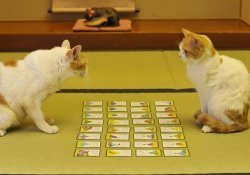Comparative of equality establishes a comparison between two or more beings. Comparative of equality are usually "เท่าไหร่" ใช้ในประโยคเช่น: "รถของฉันดีพอๆ กับของคุณ" หรือ "เขาเร็วเหมือนเสือชีต้า".
ในภาษาญี่ปุ่นเราใช้การเปรียบเทียบความเท่าเทียมกัน "ように" และ "ような" (youni e youna). ในการเปรียบเทียบเราใช้โครงสร้างต่อไปนี้:
- กはขのようにADJ ou VERBO;
- SUBSTANTIVE + のように + คำสั่งหลัก
VERB + ように +VERBO PRINCIPAL; - PはAのようなBにVERBO (ような+ substantivo);
- ADJ หรือ VERB + ような + SUBSTANTIVO / PESSOA;
So we come to the conclusion that ように is used with an adjective and a verb. Meanwhile ような is used with a noun. It is worth mentioning that よう is used in other situations to indicate other things such as something similar or alike. Below, see details of each structure related to よう:
- よう - ราวกับว่า;
- ような - ทันทีเช่นเดียวกับ (ใช้กับคำนาม);
- ように - เช่น - เมื่อ (ใช้กับคำกริยาหรือคำคุณศัพท์);
- ...ように- เตือน ออกคำสั่ง (จบประโยค);
- ようになる - ようになった - กลายเป็น, มาถึงจุด, สามารถ;
- ようだ - ようです - ดูเหมือน;
- みたいに みたいな (แบบเรียกขาน). - ดูเหมือน;
Of course, the structure will depend on how we want to express or say the phrase, the examples below will help you understand the function and difference of ように and ような.
ตัวอย่างประโยค
- 彼はチーターのように早いです。
- Kare wa chītā no yō ni hayaidesu;
- Ele é rápido como um Guepardo;
ในประโยคนั้นเรามีตัวอย่างง่ายๆโดยใช้ように
- 実乃梨は堀江由衣のように歌えるよ。
- Minori wa horie yui no yō ni utaeru yo;
- Minori pode cantar como Yui Horie;
อีกตัวอย่างหนึ่งโดยใช้ように ในขณะที่เรากำลังพูดถึงความเท่าเทียมกันฉันต้องพูดว่า: 彼女たたは同じですよ (Kanojotachi wa onajidesuyo) พวกเขาเหมือนกัน
- かれは宮殿のような家に住んでいる。
- Kare wa kyūden no yōna ie ni sunde iru;
- Ele vive em uma casa que parece um palácio;
ตอนนี้ในตัวอย่างนี้เราได้ใช้ような เขาตระหนักว่าตอนนี้วัตถุ 2 ชิ้นที่เปรียบเทียบกันนั้นคั่นด้วยような
- 彼は私が想像していたような人ではなかった。
- Kare wa watashi ga sōzō shite ita yōna hitode wa nakatta;
- เธอไม่ใช่คนที่ฉันคิดว่าเธอจะเป็น;
This example showed a negative case, it is noticeable that the same structure is used.
- 一条くんの恋人はゴリラのような女だ。
- Ichijō-kun no koibito wa gorira no yōna on'nada;
- ไม่มีข้อความที่ต้องแปลสำหรับฉันในขณะนี้ แต่ถ้าคุณมีคำถามหรือต้องการให้ฉันช่วยอะไรก็ตาม โปรดแจ้งให้ฉันทราบครับ
ฉันหวังว่าคุณจะเข้าใจการอ้างอิงของประโยคนั้น
- 彼はきつねみたいにずるいです。
- Kare wa kitsune mitai ni zuruidesu;
- เขาฉลาดเหมือนหมาป่า;
ในตัวอย่างนี้เราใช้รูปแบบภาษาพูดของように
- 猫のような雲
- เหมือนเมฆที่เหมือนแมว;
- ภูเขาที่ดูเหมือนแมว;
ประโยคนี้ง่ายประกอบด้วยคำนามเพียง 2 คำ
- プロのように日本語を話したい。
- Puro no you ni nihongo wo hanashitai;
- ฉันต้องการพูด ภาษาญี่ปุ่น เหมือนผู้เชี่ยวชาญ;
ตัวอย่างนี้ใช้ようにกับ คำกริยาในรูปแบบ tai
- その紙飛行機は白い鳥が空を飛んでいるように見える。
- Sono kami hikouki wa shiroi tori ga sora wo toned iru you ni mieru;
- This paper airplane looks like a white bird flying through the sky.
This example was a bit more complex and did not use the particle の before ように. This happened because the word before ように is a verb.
These examples were sufficient for you to understand how to make comparisons of equality? If you want to supplement the article, leave your comments.





